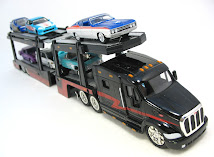 According to the latest information, the U.S. safety regulators are planning to approach NASA scientists to assist them in analyzing the unintended acceleration problem in Toyota cars.
According to the latest information, the U.S. safety regulators are planning to approach NASA scientists to assist them in analyzing the unintended acceleration problem in Toyota cars. According to the U.S. Transport Secretary Ray LaHood, there will be detach study on the Toyota issue. And, it will be led by another specialist who will look into the acceleration problem across the auto industry.
We are determined to obtain to the bottom of unintended acceleration, LaHood said in an interview.
The Toyota issue is being evaluated by Transportation Department's National Highway Traffic Safety Administration.
Earlier, Toyota had to recall about 8.5 million Toyota and Lexus vehicles all over the world due to electronic strangle problems. Then, it came under the U.S. lawmakers’ fury who demanded instant inquiry and heavy compensation from the automaker.
As per the NHTSA statement, the review is expected to be finished by late summer after which the agency would determine whether to go for a formal investigation.
Toyota is struggling currently to win the trust of the consumers and its market in auto segment. So, the report might pose a hard time for the auto huge to maintain its position.
Meanwhile, Toyota has also frequently snubbed the discrepancy in the safeguards in its vehicle electronics and has seen no evidence that they have failed on the road.
























